152 scholarly books by Royal Botanic Gardens, Kew and 8
have author last names that start with M
152 scholarly books by Royal Botanic Gardens, Kew and 8
152 scholarly books by Royal Botanic Gardens, Kew
8 have author last names that start with M have author last names that start with M
8 have author last names that start with M have author last names that start with M
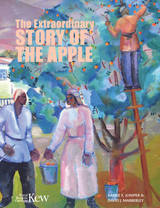
The Extraordinary Story of the Apple
David Mabberley
Royal Botanic Gardens, Kew, 2018
The story of apples begins in an unexpected place: with bears. While popular culture likes to link honey with these creatures, DNA evidence shows that it might be more accurate for Winnie the Pooh to be munching on an ancestor of Red Delicious. And while apples are modern America’s second favorite fruit (after “berries”), their origins lie in ancient China. These are just some of the remarkable details that arise from Barrie E. Juniper and David J. Mabberley’s The Extraordinary Story of the Apple. Written by two leading botanical experts, it’s a complete natural and cultural history of the apple.
Using DNA evidence, Juniper and Mabberley trace the fruit’s geographical journey through time and across countries. They show how the apple has long been one of the most important fruits in the temperate regions of the world, and that it has been beloved since the times of the Persians, Greeks, and Romans. Its reach grew thanks to its reputation as a highly nutritional food source as well as one that is remarkably convenient, as the apple can be stored throughout a harsh winter or easily transported over long distances. The authors also examine the apple’s global influence on human culture. After all, it’s the fruit that played a key role in the fall of Adam and Eve, the inspiration for Newton’s Law of Gravity, and the rise of a tech behemoth.
With a nod to this book’s roots with the Royal Botanic Gardens, Kew, chapters also cover types of apple and apple crops, grafting techniques over time, archaeological discoveries, use as a food and in cider making, as well as the latest research in apple biology. This fascinating book is illustrated throughout with color illustrations, paintings, photographs, and line drawings, and will make the ideal read for gardeners, growers, botanists, historians, archaeologists and zoologists alike. The next time you pluck an apple from a supermarket bushel, you’ll understand the millennia of human—and Ursidae—influences on that humble fruit.
Using DNA evidence, Juniper and Mabberley trace the fruit’s geographical journey through time and across countries. They show how the apple has long been one of the most important fruits in the temperate regions of the world, and that it has been beloved since the times of the Persians, Greeks, and Romans. Its reach grew thanks to its reputation as a highly nutritional food source as well as one that is remarkably convenient, as the apple can be stored throughout a harsh winter or easily transported over long distances. The authors also examine the apple’s global influence on human culture. After all, it’s the fruit that played a key role in the fall of Adam and Eve, the inspiration for Newton’s Law of Gravity, and the rise of a tech behemoth.
With a nod to this book’s roots with the Royal Botanic Gardens, Kew, chapters also cover types of apple and apple crops, grafting techniques over time, archaeological discoveries, use as a food and in cider making, as well as the latest research in apple biology. This fascinating book is illustrated throughout with color illustrations, paintings, photographs, and line drawings, and will make the ideal read for gardeners, growers, botanists, historians, archaeologists and zoologists alike. The next time you pluck an apple from a supermarket bushel, you’ll understand the millennia of human—and Ursidae—influences on that humble fruit.
[more]
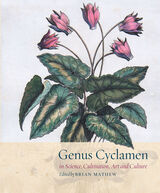
Genus Cyclamen
In Science, Cultivation, Art and Culture
Brian Mathew
Royal Botanic Gardens, Kew, 2013
The Cyclamen is a literary and artistic darling, decorating ceramics, pottery, and jewelry, and found in botanical art references dating back to the first century. It is also a favorite of gardeners, growers, and botanists due to its extraordinary capacity for variation, in colors, shapes, fragrances, and flowering periods.
Genus Cyclamen is a celebration of this remarkable plant. Its science-based emphasis on botany and cultivation is complemented by sections on art and history, including twenty-five newly commissioned paintings and over seven hundred photographs. It provides a wealth of information, including taxonomic descriptions, flowering periods, distribution, and habitat, all based on the deep knowledge and practical experiences of the Cyclamen Society and other cyclamen experts. This book will find a wide audience of growers, gardeners, botanists, and enthusiasts, thanks to its all-encompassing coverage of the cyclamen and its informative, but accessible style.
Genus Cyclamen is a celebration of this remarkable plant. Its science-based emphasis on botany and cultivation is complemented by sections on art and history, including twenty-five newly commissioned paintings and over seven hundred photographs. It provides a wealth of information, including taxonomic descriptions, flowering periods, distribution, and habitat, all based on the deep knowledge and practical experiences of the Cyclamen Society and other cyclamen experts. This book will find a wide audience of growers, gardeners, botanists, and enthusiasts, thanks to its all-encompassing coverage of the cyclamen and its informative, but accessible style.
[more]
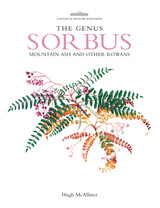
Genus Sorbus
mountain ash and other rowans
Hugh A. McAllister
Royal Botanic Gardens, Kew, 2005
Varying from tiny mountain shrubs to tall trees, there is a rowan suitable for every garden. Dr McAllister has 25 years of knowledge and experience in growing rowans, and in this book describes over 60 visually striking species, including recent introductions from China. The re-appraisal of classification, evolutionary history, ecology and conservation will bring botanists up to date on latest research, while sections on propagation and cultivation will prove invaluable to gardeners, nurserymen and horticulturists. Eighteen full-page paintings by the renowned artist Josephine Hague, and over 100 colour photographs, illustrate the text.
[more]
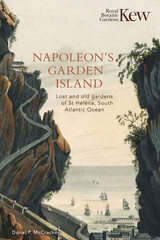
Napoleon’s Garden Island
Lost and Old Gardens of St Helena, South Atlantic Ocean
Donal P. McCracken
Royal Botanic Gardens, Kew, 2022
Napoleon’s Garden Island reveals the amazing botanical history of one remote Atlantic island.
Though the South Atlantic island of St. Helena is best known as the site of Napoleon’s exile following his final defeat in 1815, this remote locale also has a rich gardening heritage and a population of highly diverse flora, both exotic and endemic. This is due to St. Helena’s history as a stopover for the vast East India Company fleets on their way to Europe, whose cargo holds carried not only spices but also plants from China, Malaysia, and India. As a result, St. Helena became a botanical hub and the island’s private plantation houses cultivated a number of extraordinarily varied gardens.
Illustrated throughout with drawings, maps, and archival materials, Napoleon’s Garden Island looks to St. Helena’s past and future alike. McCracken explores the island’s native and introduced flora, ultimately appealing for the establishment of a new permanent garden to showcase this singular botanical blend. Turning away from the military matters that characterize most other books about St. Helena’s history, Napoleon’s Garden Island highights how a dazzling assortment of plants have thrived thousands of miles from their nearest neighbors.
Though the South Atlantic island of St. Helena is best known as the site of Napoleon’s exile following his final defeat in 1815, this remote locale also has a rich gardening heritage and a population of highly diverse flora, both exotic and endemic. This is due to St. Helena’s history as a stopover for the vast East India Company fleets on their way to Europe, whose cargo holds carried not only spices but also plants from China, Malaysia, and India. As a result, St. Helena became a botanical hub and the island’s private plantation houses cultivated a number of extraordinarily varied gardens.
Illustrated throughout with drawings, maps, and archival materials, Napoleon’s Garden Island looks to St. Helena’s past and future alike. McCracken explores the island’s native and introduced flora, ultimately appealing for the establishment of a new permanent garden to showcase this singular botanical blend. Turning away from the military matters that characterize most other books about St. Helena’s history, Napoleon’s Garden Island highights how a dazzling assortment of plants have thrived thousands of miles from their nearest neighbors.
[more]
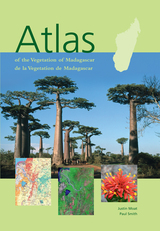
Atlas of the Vegetation of Madagascar
Justin Moat
Royal Botanic Gardens, Kew, 2007
Madagascar is the world’s fourth largest island, and is recognized as one of the world’s top ten hotspots for biodiversity. It is estimated that there are about 10,000 plant species on the island. Of these, 80 % or more occur nowhere else. Man arrived in Madagascar just 2,000 years ago and since has cleared much of the island’s forest. This impact and the uniqueness of its plants have made Madagascar of paramount importance to international conservation efforts.
This first vegetation atlas for Madagascar, supported by the Critical Ecosystem Partnership Fund, has combined vegetation data from fieldwork and satellite images into a map-based information system. The result is a conservation tool which will help Madagascar’s government and people to plan a more sustainable future. This atlas is also of great use to anyone studying or visiting the island.
Presented in both French and English, the atlas gives a brief history of vegetation mapping in Madagascar; the methodology used in compiling these new maps; and detailed descriptions of each vegetation type, illustrated with photographs and diagrams. Trends in deforestation, extent of occurrence and levels of protection are assessed for each vegetation type. Additional information includes roads, trails, rivers, airports, reserves and a full place name index.
The atlas comprises 36 maps in A3 format, all in high resolution colour.
This first vegetation atlas for Madagascar, supported by the Critical Ecosystem Partnership Fund, has combined vegetation data from fieldwork and satellite images into a map-based information system. The result is a conservation tool which will help Madagascar’s government and people to plan a more sustainable future. This atlas is also of great use to anyone studying or visiting the island.
Presented in both French and English, the atlas gives a brief history of vegetation mapping in Madagascar; the methodology used in compiling these new maps; and detailed descriptions of each vegetation type, illustrated with photographs and diagrams. Trends in deforestation, extent of occurrence and levels of protection are assessed for each vegetation type. Additional information includes roads, trails, rivers, airports, reserves and a full place name index.
The atlas comprises 36 maps in A3 format, all in high resolution colour.
[more]
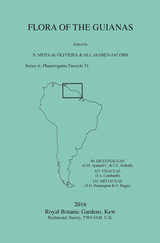
Flora of the Guianas Series A
Meliaceae
Sylvia Mota de Oliveira
Royal Botanic Gardens, Kew, 2016
A critical, illustrated look at the flora of Guyana, Suriname, and French Guiana, designed to treat phanerogams as well as cryptogams of the area. This edition covers the Meliaceae family, and provides plant descriptions, distribution, and taxonomic keys.
[more]
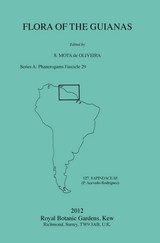
Flora of the Guianas Series A
Phanerogams Fascicle 29: 127 Sapindaceae
Sylvia Mota de Oliveira
Royal Botanic Gardens, Kew, 2013
A critical, illustrated look at the flora of Guyana, Suriname, and French Guiana, designed to treat phanerogams as well as cryptogams of the area. This edition covers the Sapindaceae family, and provides plant descriptions, distribution, and taxonomic keys.
[more]
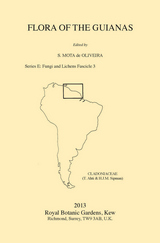
Flora of the Guianas Series E (Fungi and Lichens)
Cladoniaceae
Sylvia Mota de Oliveira
Royal Botanic Gardens, Kew, 2014
A critical, illustrated look at the flora of Guyana, Suriname, and French Guiana, designed to treat phanerogams as well as cryptogams of the area. This edition covers the Cladoniaceae family, and provides plant descriptions, distribution, and taxonomic keys.
[more]
READERS
Browse our collection.
PUBLISHERS
See BiblioVault's publisher services.
STUDENT SERVICES
Files for college accessibility offices.
UChicago Accessibility Resources
home | accessibility | search | about | contact us
BiblioVault ® 2001 - 2024
The University of Chicago Press









